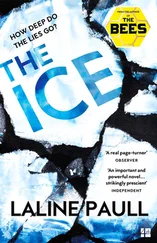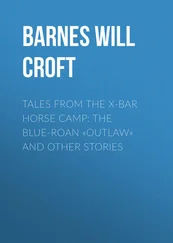Diane Stuckart - A Bolt from the Blue
Здесь есть возможность читать онлайн «Diane Stuckart - A Bolt from the Blue» весь текст электронной книги совершенно бесплатно (целиком полную версию без сокращений). В некоторых случаях можно слушать аудио, скачать через торрент в формате fb2 и присутствует краткое содержание. Год выпуска: 0101, Издательство: PENGUIN group, Жанр: Исторический детектив, на английском языке. Описание произведения, (предисловие) а так же отзывы посетителей доступны на портале библиотеки ЛибКат.
- Название:A Bolt from the Blue
- Автор:
- Издательство:PENGUIN group
- Жанр:
- Год:0101
- ISBN:нет данных
- Рейтинг книги:5 / 5. Голосов: 1
-
Избранное:Добавить в избранное
- Отзывы:
-
Ваша оценка:
- 100
- 1
- 2
- 3
- 4
- 5
A Bolt from the Blue: краткое содержание, описание и аннотация
Предлагаем к чтению аннотацию, описание, краткое содержание или предисловие (зависит от того, что написал сам автор книги «A Bolt from the Blue»). Если вы не нашли необходимую информацию о книге — напишите в комментариях, мы постараемся отыскать её.
A Bolt from the Blue — читать онлайн бесплатно полную книгу (весь текст) целиком
Ниже представлен текст книги, разбитый по страницам. Система сохранения места последней прочитанной страницы, позволяет с удобством читать онлайн бесплатно книгу «A Bolt from the Blue», без необходимости каждый раз заново искать на чём Вы остановились. Поставьте закладку, и сможете в любой момент перейти на страницу, на которой закончили чтение.
Интервал:
Закладка:
With the same care I might have used with a fragile bit of old lace, I folded the silk and velvet garb into a second pile upon my bed and then eyed both stacks of male clothing. Sooner or later, my mother would guess that I’d fled the house in my brothers’ borrowed garb, and so would come looking for it. No doubt she would burn the offending garments if she found them, seeing them as flagrant reminders of my transgressions. But the page’s costume, she would have no cause to know ever existed.
I grabbed up those clothes and, wrapping them in another veil, carefully hid them atop the wardrobe alongside my notebooks. Then, not allowing myself to examine my motives for that impulsive act, I looked to see what remained.
I had sorted through everything, and yet here was something that I did not recognize. . That was, not entirely. For whatever the flat, rectangular object was, it was secured in what appeared to be the same scrap of green silk that Leonardo had used to conceal his model of the flying machine. Curious, I untied the cord that held it.
The silk slipped from a small wooden panel perhaps half the size of those that my fellow apprentices and I spent hours sanding for the Master’s use when a commissioned portrait came his way. And, indeed, it was a portrait that I held, the soft oils glowing as if lit by a candle, though my room was dim. I immediately recognized it as Leonardo’s work, for his gifted hand was evident in every delicate brushstroke.
But what took my breath from me was the subject of the painting itself.
It was an unusual composition, to say the least. . the head and shoulders of a dark-haired youth, cloth cap upon his head and garbed in a simple brown tunic. I could not see his face, for he was turned away, his gaze fi xed upon a large mirror whose silvered surface he’d reached out a hand to touch. Reflected back at him was not his youthful face, however; rather, it was that of a young woman with green eyes and a luxuriant braid of dark hair.
Her be-ringed hand stretched out in mirror image of his, so that their fi ngers seemed to touch despite the glass that separated them. But the woman in the mirror was not looking at the youth whose reflection she was. Instead, she gazed out with just a hint of a smile past his shoulder, her attention fi xed on the world beyond.
I stared a long while at the painting, torn between laughter and tears at this amusing yet poignant image of me that Leonardo, in his brilliance, had somehow captured. When he had painted it, I could not guess, for I had never sat for this likeness. The oils were long dry, however, so he must have finished it before the truth of my identity had been revealed.
Had he thought the completed portrait but a witty trick of his brush that I would appreciate, or had he poured his heart into it in the same way I had poured mine into my fresco?
I sighed a little and shook my head, for I knew Leonardo da Vinci well enough by now to guess at that answer.
Still, I would cherish the painting always, though I would never dare hang it for all to see. Instead, with a final admiring look, I wrapped the portrait of Dino reflected as Delfina in the green silk once more and retied the cord. I left my room a few moments later, carrying the rest of Dino’s worldly goods to give to my mother, to do with as she would.
As for the portrait, by then it was safely hidden atop my wardrobe along with my page’s outfit and my notebooks, waiting for the day when I would have cause to look upon it again.
AUTHOR’S NOTE
More than 400 years before the brothers Wilbur and Orville made history at Kitty Hawk, a man named Leonardo da Vinci was busy documenting the anatomy of birds and the vagaries of the wind. His ultimate goal: to build a craft that would allow a man to fly like his feathered brethren. This was no passing fancy on the part of Leonardo. Over a period of years, he dissected, observed, and sketched every movement of a bird’s flight so that he might understand what allowed them to gain the clouds, while Man was relegated to the earth. His writings culminated in the detailed Treatise on the Flight of Birds compiled sometime around 1505.
As for his drawings, they progressed over the years from scholarly studies of birds and their wings to fledgling designs that resemble today’s parachute and helicopter. He went on to sketch numerous detailed variations on winged crafts that incorporated the principles he had documented in his writings. Some, like a pair of immense wings strapped to a man’s back, were admittedly fanciful; others were amazingly reminiscent of modern gliders. History does not record Leonardo ever making a successful flight in one of these contraptions. . but then, I suspect that history did not record quite a bit of the Master’s more outrageous doings.
Further notes. For those who have been following the action with a historical atlas in hand, you’ve likely noticed that the tiny province of Pontalba is not to be found within the Duchy of Milan. . or anywhere else, for that matter. Both it and the unpleasant Nicodemo, Duke of Pontalba, are my own creations. As for the spunky Marianna, she is one of several fictional relatives that, purely for story purposes, I’ve given Il Moro in the course of this and past books.
Finally, the quote in the epilogue attributed to Delfina della Fazia is actually a well-known citation that has long been credited to Leonardo da Vinci. . though likely it was never written or said by him at all. But while no Leonardo expert has discovered those words among the Master’s volumes of work, neither has anyone yet identified the actual writer of this lofty sentiment. And so, with greatest apologies to that unknown author, I’ve taken the liberty of putting those words into Delfina’s mouth. For I have no doubt that, following her dramatic flight around Castle Pontalba, she must have recorded a similarly memorable affirmation in her own notebook!
Интервал:
Закладка:
Похожие книги на «A Bolt from the Blue»
Представляем Вашему вниманию похожие книги на «A Bolt from the Blue» списком для выбора. Мы отобрали схожую по названию и смыслу литературу в надежде предоставить читателям больше вариантов отыскать новые, интересные, ещё непрочитанные произведения.
Обсуждение, отзывы о книге «A Bolt from the Blue» и просто собственные мнения читателей. Оставьте ваши комментарии, напишите, что Вы думаете о произведении, его смысле или главных героях. Укажите что конкретно понравилось, а что нет, и почему Вы так считаете.












